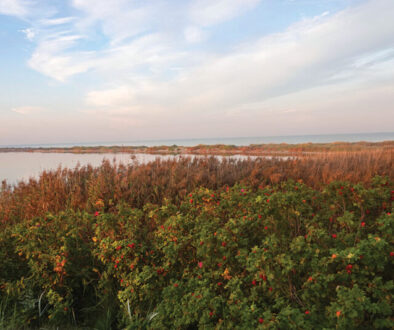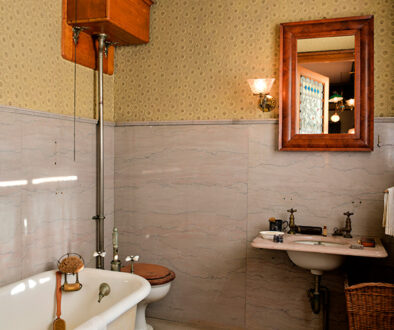A Matter of Principles

The best gardens don’t just happen by accident. They are carefully and systematically designed and thought out. When you visit one, you immediately recognize the difference. Many gardeners never have a plan. They buy what appeals to them but what they end up with is simply a collection of plants.
You don’t have to be a professional with a degree in landscape design, you just need to keep some basic principles in mind. Although we will discuss them today in the context of landscaping, these basic principles are applicable when designing just about anything. The purpose of following them is to create a garden that is not only pretty but easy to look at and to be in. The consequence of ignoring them is a space that is chaotic and visually disturbing, therefore not comfortable to visit—or one that is just plain boring.
Depending on the source, some of these concepts have different nomenclature, but the ideas are the same.
There are six principles. Some sources describe many more but seem to confuse elements of design with principles. Elements are the ingredients—the what. Principles are the why and the how. All these things work together to achieve one goal: unity. Let’s start there.
Unity is the quality of oneness. It’s how things work together to create a total picture. Plants (and other things) are organized into orderly groups with emphasis to attract and hold your attention.
Elements:
Line defines the shape of your garden beds and how pathways flow through the space – think 2D. Lines and curves should be sweeping and bold. Avoid zigzagging, snakelike lines. Think big.
Form refers to the 3D shapes of things like shrubs, e.g. round, pyramidal, spreading, weeping, etc.
Texture describes the size, shapes, and spacing of leaves and branches: fine and pointed leaves like weeping willows or Japanese maples or big and round like redbud or catalpa. Textures give a certain feeling to a space—bold and heavy versus soft and delicate. Make sure you have some of each.
Color, of all the elements, is the one that evokes the greatest response and gives your garden the greatest appeal.
Principles help in the overall layout of a garden as well as in the selection of plants and hardscape materials. Some principles may seem to be at odds with others. But look carefully and you will discover that even the ones that seem to be contradictory all work together to create harmony in a space.


Principles:
Simplicity – Just as it implies, keep it simple. Limit the number of hardscape materials and plant varieties. Choose a color palette and stick to it, especially if your property is small.
Variety – Vary the shapes, sizes, and types of plants and hardscape materials—but not too much. Less is more.
Sequence refers to the order of things. It is what gives the space movement and flow. Think of it as the rhythm of the garden. There should be a smooth and gradual transition from one space to another. There are three important things to keep in mind. 1. Repetition of materials and color at standard intervals; 2. Massing—a group of things is more impactful than a single plant, unless it is a focal point; 3. The rule of odd numbers. Plant in groups of three, five, or seven. The eye cannot easily divide odd numbers of items, so it sees them as a group unless the group is very large. If you can’t easily count the items, your eye automatically sees them as one group.
Emphasis is where the eye goes first. It is the exclamation or focal point in a garden. Each area should have one. They can be anything—a tree, a fountain, or a splash of color. Focal points have dominance in the space, and as such can be overpowering if you overdo it. The trick is to not have too many. Multiple focal points in any one space causes confusion. The eye simply doesn’t know where to look. For example, we’ve all seen gardens that have too many topiary trees—you don’t want to create Disney World in your backyard.
Scale is about size as it relates to structures on the property and other plants. Things should be proportional both vertically and horizontally. Don’t plant tiny little shrubs in front of a three -story building. By extension, very large trees and shrubs can dwarf a small house making it look even smaller.
Balance is visual equilibrium. Symmetry is the easiest way to achieve it but not the only way. Each side of a property does not have to be identical to be balanced. In fact, most homes are not symmetrical and therefore do not lend themselves to symmetrical landscapes.
Well, that was a lot of words and a lot to process—and maybe to some of you, blah, blah, blah. But a picture is worth a thousand words. Last summer I had the pleasure of visiting a private garden on Lafayette Street as part of MAC’s annual garden tour. The garden was created by the property’s owner, Valerie Carlin, who is not a professional landscape designer.
Valerie and her husband Martin purchased what was formerly the Primrose Bed & Breakfast about nine years ago. There wasn’t much left of the previous lovely gardens because they had been neglected for quite some time, but they loved the property for the potential it had and began anew. They started by renaming it the Blue Heron, which set the stage for the gardens to come and automatically defined their color palette.

I was so impressed by what seemed to come naturally to Valerie. As she described what she created I couldn’t help but silently translate them into the technical terms that designers use. I asked her how she learned what to do and what not to do, other than being born with a good eye for design. She replied, “…by observing and imitating what I saw on display at one of my favorite garden centers.” This is how I translated what she said:
“I chose three colors: yellow, blue and purple (and a little white).”
Simplicity – Her palette coordinates with the structure, and the colors are complementary (on the color wheel) which automatically makes each one appear brighter and more vibrant.
“I plant small, medium, and large things. I like perennials and I know the timing of when they bloom is important as are annuals. Fat Albert Spruce and Japanese Threadleaf Maple are two of my favorite trees. I have many of them spaced out around the property.”
Variety, Sequence (Repetition) and Scale: The blue spruces and maples are true to her color palette, provide textural interest, and function as focal points, especially the one to the right of the porch. It is perfectly framed by the porch itself and gives a sense of enclosure when you are seated there. It is beautiful and dramatic.
“I plant in odd numbers but six of something is okay because it is two groups of three. I like waves of color, not onesies or twosies. I want you to have the same feeling as you walk through the gardens. I repeat things with a splash of something here and there. I like to call them little surprises.”
Sequence (Repetition & Massing) and Emphasis: Each area has its own focal point—garden ornaments, large specimens and splashes of color were all used effectively.
“I plant for the neighbors and people who walk by as well as myself. What they see is important, too.”
Perspective—although not technically one of the six principles, it is a critical component of successful design. Consider all the angles from which your garden will be viewed—even from inside your house.
Valerie and Marty have big plans for next year. A new addition and a swimming pool will give rise to new plantings. She said, and all gardeners would agree, “Nothing’s ever finished.” By the way, my photos simply do not do justice to these gardens. Be sure to take notice as you travel down Lafayette Street. In summer, the yellow wave petunias are sure to make you smile.



